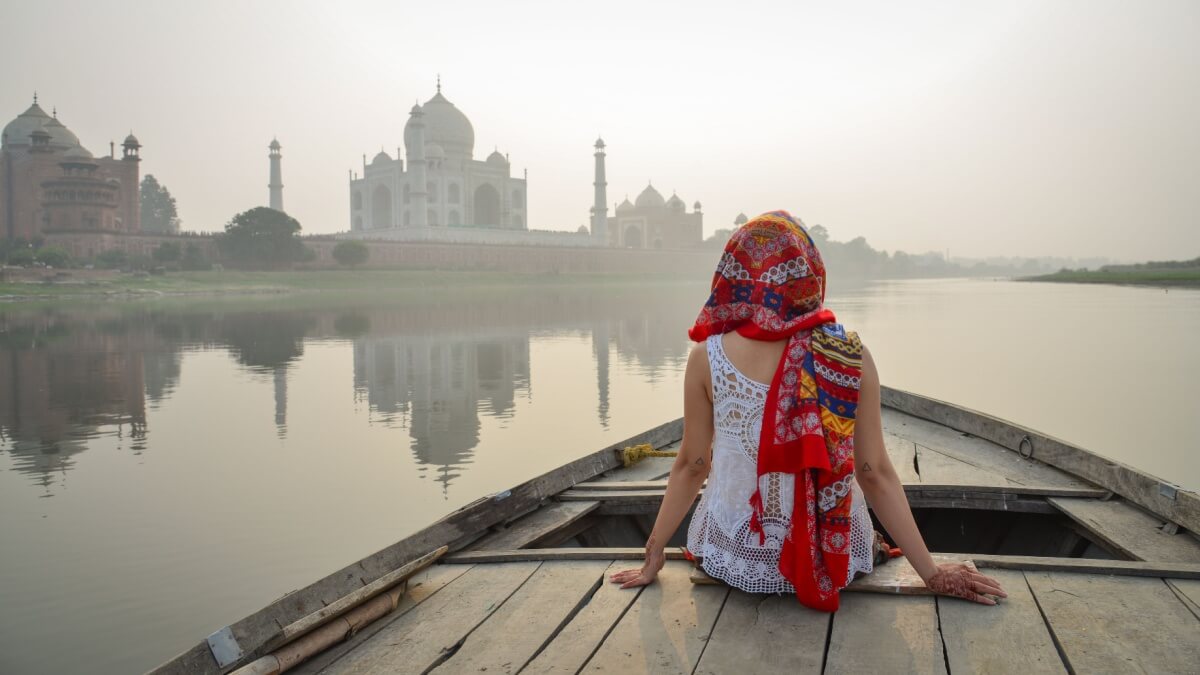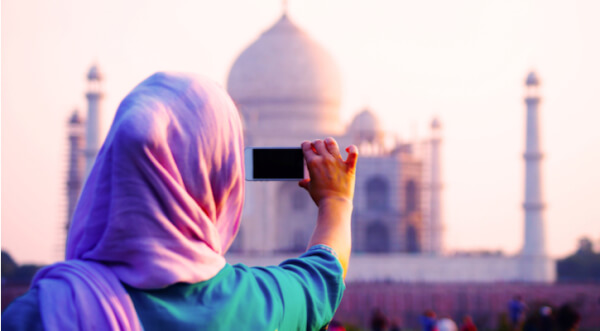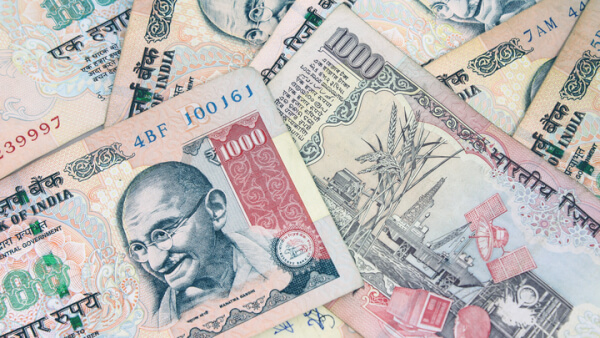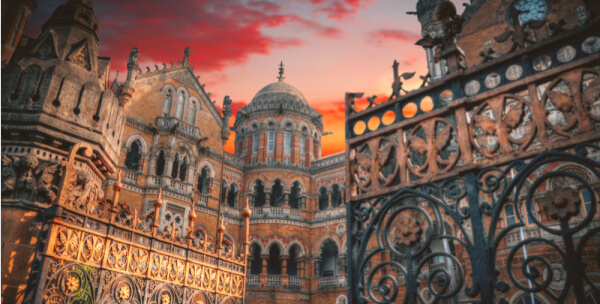Best Travel Insurance for India: Review of Options in Australia [2025]
Find the best travel insurance for India. Compare Australian providers' coverage options and prices for your Indian holiday.

India is fast emerging as a top tourist destination for Australians with recent data showing Australia as one of the top four countries for arrivals to the nation in 2022.¹
A vast and incredibly diverse country, India is equally as popular with backpackers as it is with luxury travellers. From pristine beaches and lush jungles in the South to breathtaking palaces and historic buildings in the north, India is truly captivating.
If India is on your travel bucket list but you’ve no idea where to begin, this guide will help you prepare. Giving insight into visas, vaccines, currency, must-sees, safety and more, we’ll help you prepare for your Indian adventure.
| 💸 Hold 40+ currencies in your account and spend at the mid-market exchange rate with the Wise card while abroad. |
|---|
Learn more about the
Wise Account
Any Australian or Australian resident entering India needs to meet its basic entry requirements. This means you will need:²
Australian passport holders are required to apply for a tourist visa before travel.³
Depending on your passport country as an Australian Resident, you may also need to secure a visa before arriving. You can check whether this is required for your passport via India's Indian Visa Online website.²
Clearing customs in India requires adherence to several different regulations, many of which are similar to the customs rules when arriving in Australia.
You must declare any goods that exceed the permitted allowance and be prepared to pay any duty and/or tax owing on these. This includes alcohol, tobacco products and jewellery among other items.⁴
If you are carrying currency in excess of USD$5000 or a mix of payment methods totalling over USD$10,000 you must also declare this to customs officers. This is roughly equivalent to AUD$7500 or AUD$15,000 respectively, based on today’s mid-market exchange rate used by Wise.
Some goods are not prohibited or restricted from being brought to India. This includes but is not limited to⁴:
As with many countries, India may also prohibit the import of certain medications. If you are travelling with medication, we recommend speaking with your local Indian embassy regarding this for guidance.
Tourist visas for India can be easily applied for online by an Australian passport holder or if you hold a passport from an eligible country.
Applications for an e-visa can be made by visiting the Government of India's Indian Visa Online website.²
To apply, you will need to⁵:
Once processed, you will receive your Electronic Travel Authorization/ETA to your nominated email. This must be printed and submitted with your passport upon arrival to immigration.
The cost of an Indian tourist visa varies based on the time of year in which you travel. Currently, should you visit between April to June it is USD$10 and for travel between July to March USD$25.00.⁶
Currently, there is no published requirement regarding the need for proof of vaccinations, including COVID-19, to enter India if travelling from Australia.
The only caveat to this is if you have visited any Yellow Fever (YF) endemic country during the past 6 days before travelling to India. In this instance, you will be required to possess a valid certificate of Yellow Fever vaccination from an authorised vaccination centre.²
It is advisable to make sure your vaccinations are up to date, particularly hepatitis and tetanus. You may also wish to pursue additional vaccines for protection against illnesses or insect-borne diseases present in India such as cholera, typhoid and Japanese encephalitis.³
Depending on your destination, getting to India from Australia will generally require a minimum of two flights with only one airline at this time offering a direct route. As a rough indication, the average flying/travel time to India from Australia’s East Coast is around 12 hours.
There is plenty of choice, however, as several airlines offer daily flights from Australia to major cities such as Delhi or Mumbai via their main airport hub.
The below table shows major airlines that fly from Australia to India’s capital New Delhi, from which cities you can depart and where you can expect to transit.
| Airlines | Departure Cities | Transit City |
|---|---|---|
| Air India | Sydney, Brisbane, Melbourne, Perth | Direct flight ex East Coast, via Sydney with partner airline if ex Perth |
| Singapore Airlines | Sydney, Brisbane, Melbourne, Adelaide, Cairns, Perth, Gold Coast | Singapore |
| Malaysian Airlines | Sydney, Melbourne, Adelaide, Perth | Kuala Lumpur |
| Cathay Pacific | Sydney, Brisbane, Melbourne, Adelaide, Cairns, Perth | Hong Kong |
As seen on 07 June 2024
Departure cities, frequency of flights and travel times are subject to change. Please review flight options directly with your chosen airline before planning your trip.
The currency used in India is the Indian Rupee (INR/₹). For reference, at the time of writing, based on the mid-market exchange rate used by Wise, AUD$1.00 is equivalent to INR₹55.72.
Cash tends to be king in India with credit and debit cards generally only accepted for larger payments at hotels or major retail outlets. Pre-paid travel money cards and non-bank debit cards such as the Wise may also be accepted where you see the Visa or Mastercard logo.
Most small businesses in India will not offer EFTPOS facilities and where they are available, contactless payments may not be enabled. For this reason, it is strongly encouraged to carry sufficient cash and a physical account card for easy ATM withdrawals.
The level of English spoken in India varies, with more English speakers present in major cities than in regional areas.
Officially, data shows that just 12% of the population speak English with a high level of fluency yet as the population is so high, this equates to over 100 million people.⁷ This means that should you need help communicating, there is likely someone nearby who may be able to assist.
Regardless, learning some basic phrases to use while travelling is advisable and will be well-received by locals.
To add to your enjoyment and for easier exploration of India, there are some handy mobile apps that are worth downloading, these include:
Similar to Uber, but specifically for India, this app allows safe and easy booking of cabs and tuk-tuks for solo use or as a rideshare option and is available in over 250 Indian cities.
A government-run ticketing app for flights and trains in India, this app shows travel routes and schedules while also offering secure, reliable reservations and purchasing of travel arrangements.
Developed by the Ministry of Tourism, this app acts as a digital guidebook that can help to enhance your travel experience. Offering tips and tricks as well as facts about cities and important landmarks, it is a must-have for visitors to India.
For those times when communication is tricky, this app can help you quickly translate spoken phrases to text from several Indian dialects to English and vice versa.
India is a huge country and there is so much to see with the North and South offering quite different experiences. If you’re limited on time or unsure where to begin, you may like to plan your trip around some main tourist spots, namely:
If you’re someone who enjoys exploring lesser-known, hidden gems while in new destinations, we suggest visiting:
Gurez Valley. Located in Kashmir, this location offers a respite from busy cities with crisp mountain air and gushing rivers that wind between green fields and traditional Indian farming huts.
Phugtal Gompa. Quite possibly one of the most remote monasteries in the world, this breathtaking attraction is set in a mountain cave in Zanskar. An incredibly unique location, you’ll need to trek for two days to get here so a high level of fitness and a local guide is needed.
Jawai in Rajasthan is an exotic and historic area that is ideal for wildlife lovers with leopards, sloth bears, Indian wolves, antelope and a variety of migratory birds all present in this region. Book a luxury tent and immerse yourself in nature.
Bhogwe, located in Maharashtra, this destination is perfect for beach lovers. Hugging the coastline, this tropical hideaway is a tranquil haven of waving palm trees, golden sands and crystal clear waters.
To avoid annoying or offending any locals, an awareness of and adherence to some basic rules and customs in India is essential. You should:
According to the Australian Government Smart Traveller safety guidance, women are advised to avoid travelling alone, even in major cities and tourist sites due to high risk of harassment.³
Tourists in general should be vigilant and aware of their surroundings. Do not leave your food or drinks unattended and don’t accept opened food and drink except from trusted sources.
Beware of potential heatwaves and keep the weather in mind during your trip.
Petty crimes such as theft or pickpocketing are common in crowded areas so a close eye should be kept on your belongings at all times.
Additionally, tourists are advised to avoid demonstrations or rallies and to be mindful of any curfews that may be in place.³
With the right safety precautions, keeping an eye on the AU Gov travel advisory page, you will be in for an awesome trip in India.
Exploring India and getting around is typically quite straightforward. For longer journeys, you can choose between trains, planes or private car transfers and within cities there are plethoras of tuk-tuks and taxis.
We suggest making use of the IRCTC app mentioned above to find the best routes and fares for planes and trains and keeping small cash denominations for inter-city transport.
Have your dream itinerary sorted and ready to start your Indian adventure? Here are some final things to be mindful of before you depart.
To speak with your nearest Indian embassy or consulate in Australia regarding your travel, you can contact them as follows:
| Embassy | Address | Phone |
|---|---|---|
| Indian High Commission, Canberra | 3-5, Moonah Place Yarralumla ACT 2600 | 02 6225 4900 |
| Indian Consulate, Sydney | 265 Castlereagh St, Sydney NSW 2000 | 02 9223 2702 |
| Indian Consulate, Melbourne | 344 St Kilda Rd, Melbourne VIC 3004 | 03 9682 5800 |
| Indian Consulate, Adelaide | 4/90 King William St, Adelaide SA 5000 | (02) 9223 2702 |
| Indian Consulate, Perth | Level 6, 12 St Georges Terrace, Perth WA 6000 | 08 9325 4074/08 9221 4205 |
With a Wise Account you can hold money in 40+ currencies and spend it in 150+ countries. Whenever you exchange currencies it’s done using the mid-market rate with a transparent conversion fee shown upfront.
To make everyday spending easier you can order a Wise Debit card for your Wise Account and generate virtual cards as needed. If you have the local currency in your Wise Account the Wise card will use it for local payments. If you don’t, it uses smart technology to auto-convert your money at the mid-market rate, for a conversion fee.
Join over 16 million customers currently using Wise. It’ll only take a few minutes to register and see what’s inside.
Register your Wise account
in minutes
Please see Terms of Use for your region or visit Wise Fees & Pricing for the most up to date pricing and fee information.
Sources:
Sources checked on: 07 June 2024
*Please see terms of use and product availability for your region or visit Wise fees and pricing for the most up to date pricing and fee information.
This publication is provided for general information purposes and does not constitute legal, tax or other professional advice from Wise Payments Limited or its subsidiaries and its affiliates, and it is not intended as a substitute for obtaining advice from a financial advisor or any other professional.
We make no representations, warranties or guarantees, whether expressed or implied, that the content in the publication is accurate, complete or up to date.

Find the best travel insurance for India. Compare Australian providers' coverage options and prices for your Indian holiday.

Planning a visit to India? It’s a culturally diverse country with vibrant cities, breathtaking beaches, and majestic mosques. It’s a true destination for many...

If you’re traveling to India, you may not be familiar with the country’s complex banking practices. Read on for tips on currency exchange, Indian banks, and...

If you’re travelling to India on holiday, you can’t get cash ahead of time.Indian law doesn’t allow foreigners to bring Indian money into the country, unless...